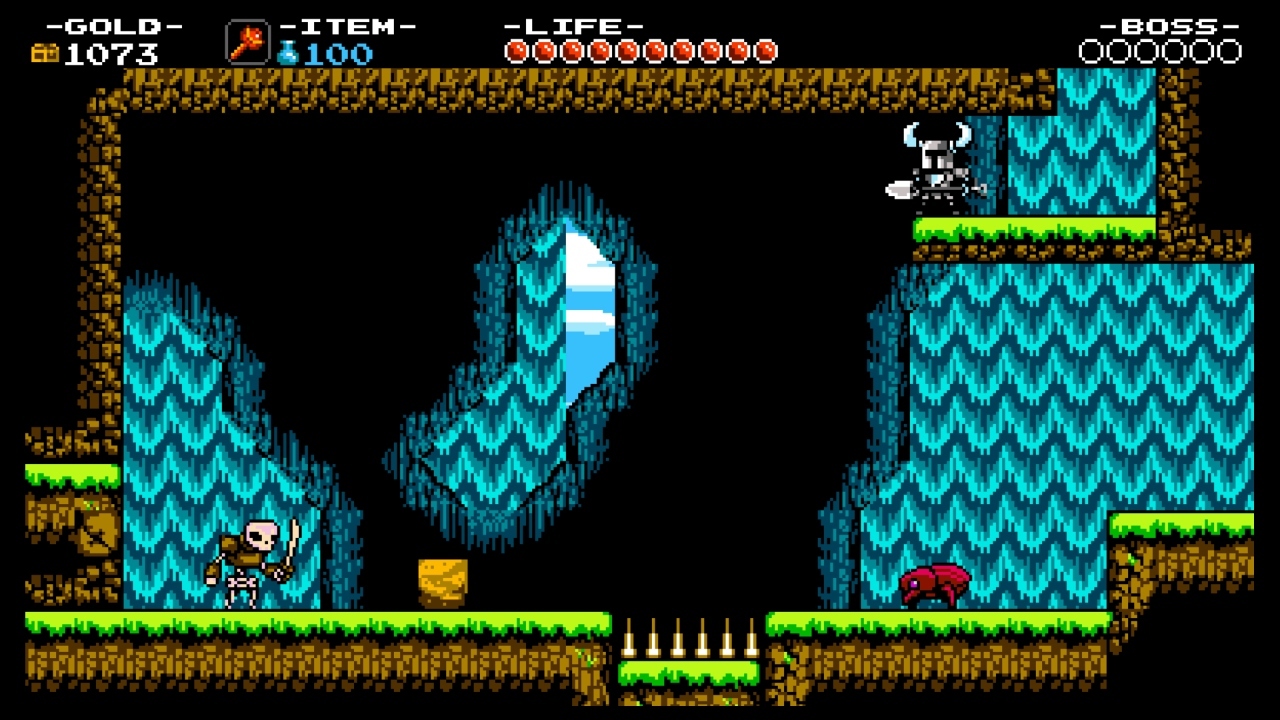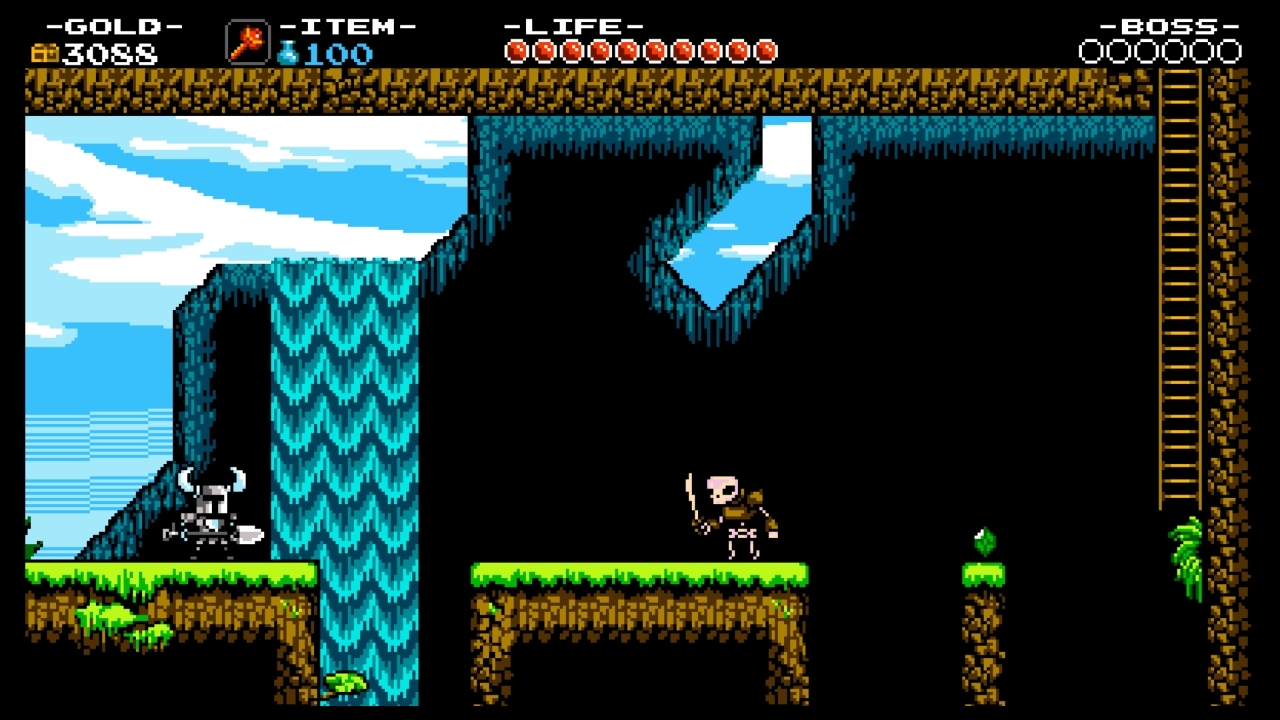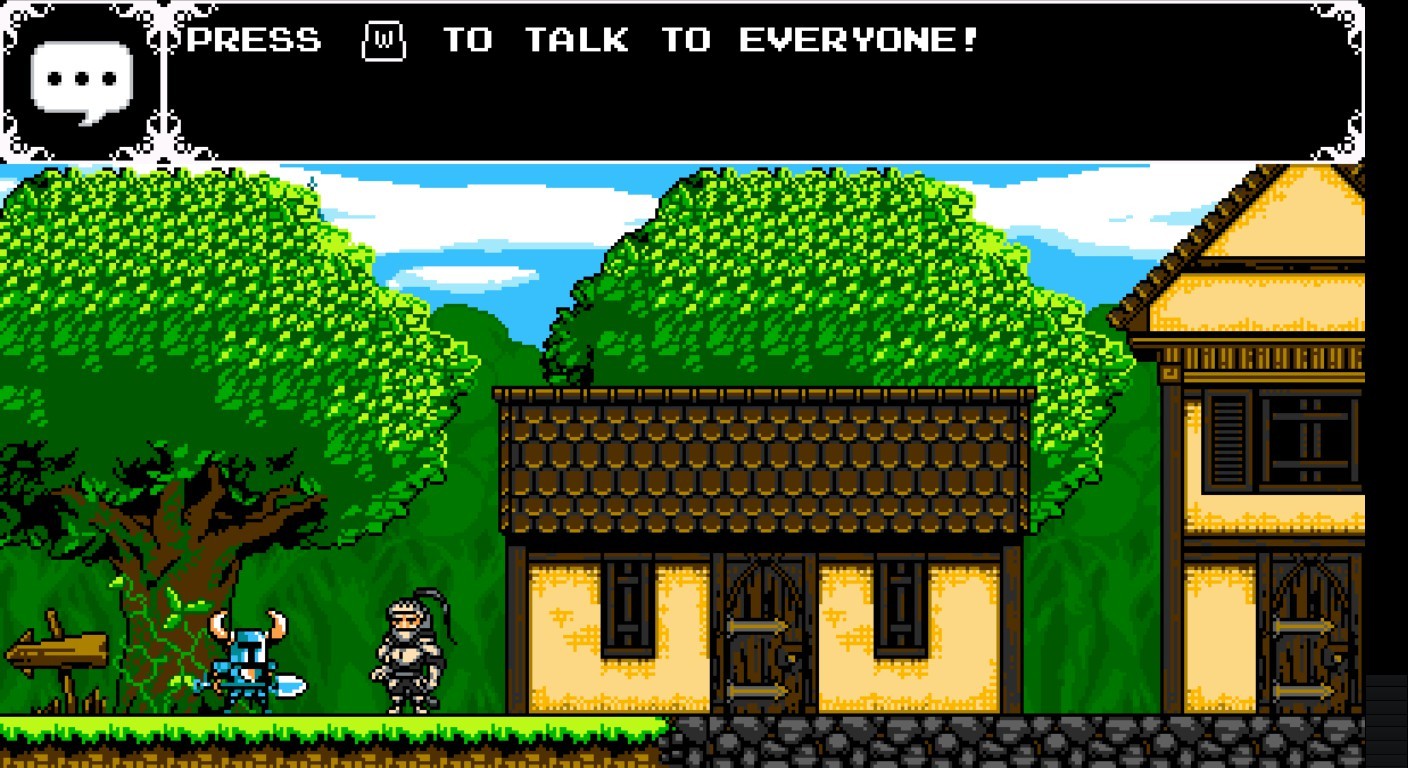Excellent dissection of the first level Neiteio; your post was thoroughly satisfying to read. I'd also point out something I picked up on when playing through the level myself:
Here the game presents the player with a choice: Go left and hit the imperfection in the wall to reveal a secret passage, as previously learned, or go right and proceed with the level. The player knows he must jump over the spikes, and he can get the drop on the skeleton by leaping off the sand block and using the shovel drop to defeat the enemy in close quarters. The imperfection in the wall leads to a series of pitfalls the player can then leap across to reach treasure.
This is the second skeleton you encounter so far. The first fight provided an opportunity to learn that the skeleton enemies won't start moving until you get close. This encounter re-iterates that point, but requires the player position themselves between the enemy and an environmental hazard for the enemy to start moving in to attack. Since this is the first time such a scenario occurs with this enemy, the developers put a small sand block in the path of the enemy, preventing it from rushing the player straight into the pit of spikes.
This scenario is reused later in the level:
A skeleton that stops just short of the edge, risking knockback down a bottomless hole, and a narrow ledge that requires pixel-perfect jumping. By this point the player is well-attuned to the controls -- controls so tight, they're an extension of the mind.
Notice that the player actually has two options here: the first is to just stand at the end of the ledge they're currently standing on; your position is close enough such that the skeleton will rush forward and fall off the ledge to their death (i.e. the "haste makes waste" point again). Alternatively the player may jump onto the platform with the skeleton and attempt to defeat it directly, this time without the safety net of an object blocking the skeleton's assault.
The concept of learning by doing/experiential learning is fantastic to put into games, that being said there's quite a ways to go still for refining this process for in-game actions that are of greater complexity, or where the controls are more abstract. Take for example the village area immediately after the tutorial in this game. The first thing that happens is the player is forced into a conversation with a nearby guard. At the end of the conversation the player is told:
This is the game explicitly telling the player controls, much like a regular game tutorial. Regardless of the elegance of how this is performed the game is still telling me how to play it rather than letting me discover it through play. The same thing occurs when gaining an item:
Of course these actions are using more abstract control inputs; pressing up to talk to someone doesn't seem terribly intuitive compared to the controls to shovel downwards (at least to the average person; a more experienced gamer probably disagrees since they have a library of acquired gaming knowledge and are more savvy to the medium). This issue isn't indicative of some failing of the developers of this game though (haven't played much of it myself, but what I have played is fantastic) but rather shows just how difficult it is to implicitly teach a player through experimentation and interaction compared to just telling them what to do.




